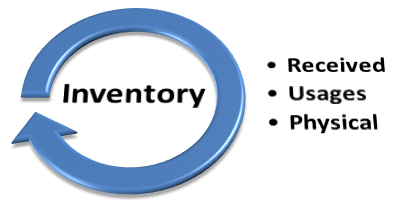Inventory Reconciliation

The Feed Inventory Reconciliation provides the details for all of the
feed transactions in a specified period to determine the valuation. All
transactions that relate to the feed will be listed in the inventory reconciliation
to determine the quantity.
The reconciliation can be run for a specified date range, farm and product.
Once the data is generated, the screen can be filtered and grouped as
required to view more specific data.

Generate
Feed Inventory Reconciliation
- In TMTS>BIM>Transactions>Feed
Inventories, select Inventory
Reconciliation.
- In the Feed Inventory Reconciliation dialog box,
enter the following parameters:
- Begin Date
- enter the start date for the inventory reconciliation
data. (Required)
- End Date
- enter the end date for the inventory reconciliation data. (Required)
- Farm No
- select the farm to filter the reconciliation data for
a specified farm. (Optional)
- Feed Type
No - select the feed type to filter reconciliation data..
Note that this option should only be selected if the Feed Inventory
Mode is set to Feed Type or Formula. (Optional)
- Formula No
- select the formula to filter the reconciliation data. This option
should only be utilized if the Feed Inventory Mode is set to Formula.
(Optional)
- Click 'OK' and the feed product reconciliation
data will load based on the selected criteria.
- Record Type
indicates the source of the inventory detail. Options will be one
of: Received, Usage or Physical.
- Trans Code
determines the transaction type for the inventory record detail.
| Record
Type |
Trans
Code |
| Receiving |
- Beginning Inventory
- Feed Trans Delivery
- Transfer In
- Transfer Out
- Inventory Variance Credit
- Variance Debit
|
| Usage |
|
| Physical |
|
- Inventory Date
represents the date that the inventory was received or removed from
inventory. If the Inventory Time Mode registry switch is set to 'Date
Time', the record will be date and time stamped.
- Source Code
represents the transaction that was used to create the valuation transaction.
- Source Ref No
displays a unique reference number for the source transaction.
- Farm No
indicates the farm where the inventory reconciliation is taking place.
- Farm Name
displays the name of the farm.
- Formula No
indicates the formula, if selected.
- Formula Name
displays a description of the formula.
- Feed Type No
identifies the type of feed that is being reconciled.
- Feed Type Name
displays a description of the feed product.
- Quantity
represents the quantity for the thread that is used to value the transaction.
- Post Status
indicates whether the transactions are posted by global post. All
transactions should be in posted status.
- Creation Date
indicates the date the transaction was created.
Additional Reconciliation Fields
The fields described above are the typical fields used to analyze the
inventory reconciliation data. The following fields are also available
depending on the type of transaction that is being reviewed.
|
|
|
|
- Thread
Beginning Quantity
|
|
|
- Thread
Beginning Unit Value
|
|
|
|
|
|
|
|
|
|
|
|
- Thread
Remaining Quantity
|
|
|
- Thread
Remaining Unit Value
|
|
|
|
|




